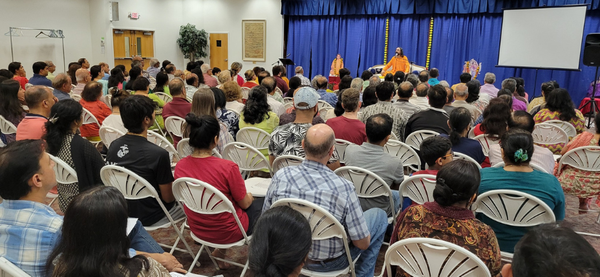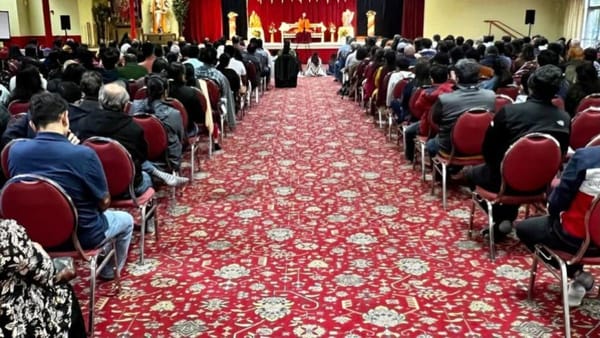Over the course of time, all of us develop habitual ways of approaching life. These habitual ways or behavior becomes so natural to us that they become our habits, which define us. As the popular saying goes, “first we form habits, then they form us. Conquer your bad habits or they will conquer you.”
We Are What We Repeatedly Do
“The science of Neurology informs us that the human brain is endowed with a hundred billion neurons. These combine with each other to form literally trillions of neural circuits. Every thought pattern we generate within our mind utilizes neural connections, and when we repeatedly bring a set of thoughts to the mind, the corresponding neural circuit becomes deeply etched in the brain. This phenomenon is called neuroplasticity, which is the ability of the mind to recognize itself by forming new neural connection in response to situations or changes in the environment. The consequence of neuroplasticity is that when a neural circuit becomes intensely engraved in the brain, the corresponding thought pattern, which created it, comes more easily to the mind, and becomes a thinking habit.” [*]
This habitual thought pattern has an impact on our outlook or perspective, which in turn sculpts our character. Therefore, whether we are honest or deceitful, kind or inconsiderate, fearless or cowardly, it is a habit that we ingrain within ourselves. It all starts with a single thought. As Ralph Waldo Emerson has rightly stated, “Sow a thought, reap an action; sow an action, reap a habit; sow a habit, reap a character; sow a character, reap a destiny.” Thus, good character is the result of good habits, while bad character is the result of bad habits.
To transform ourselves, it’s imperative we not only change individual thoughts, but also make the new thought pattern into a habit, until it becomes automatic. In other words, we need to discard dysfunctional habits and develop beneficial ones. To do so, first we need to understand what drives our habitual thought pattern and behavior.
Why We Do What We Do
According to the Vedic scriptures, we all seek happiness in everything we do. However, we have different ideas regarding where happiness lies. We seek happiness in the things that surround us, be it wealth, fame, money, power, etc. Everyone’s goal is happiness. Twenty-four hours a day, all our activities are directed towards fulfilling one goal – happiness!
“The Vedas speak about two kinds of happiness or pleasure: śhreya and preya. Śhreya is that pleasure which is bitter in the beginning, but becomes sweet in the long run and thus ultimately beneficial. On the contrary, preya is the pleasure which is pleasant in the beginning, but ultimately causes great pain and harm. These can be thought of as akin to delayed gratification versus immediate gratification.” [*]
Eating an āmlā (Indian gooseberry) is an apt example of śhreya. Āmlā is a super-food that is very beneficial for health. It has the vitamin C of ten oranges. However, children dislike it since it has a bitter taste. Parents in India encourage children to eat it, saying: āmle kā khāyā aur baḍoṅ kā kahā, bād meṅ patā chalatā hai (v20.1) “The benefits of both these—eating of āmlā and the advice of the elders—are experienced in the future.” Interestingly, after eating the āmlā, in just a couple of minutes, the bitter taste disappears, and sweetness is experienced. And the long-term benefits of consuming the natural Vitamin C are undoubtedly numerous. Śhreya’s happiness is of the same nature - it seems bitter in the short-run but is like nectar in the end. And preya is precisely the reverse – it seems like ambrosia initially but turns out to be poison in the end. Regarding śhreya and preya, the Kaṭhopaniṣhad states:
anyachchhreyo ’nyadutaiva preyaste ubhe nānārthe puruṣhaṁ sinītaḥ
tayoh śhreya ādadānasya sādhu bhavati hīyate ’rthādya u preyo vṛiṇīte
śhreyaśhcha preyaśhcha manuṣhyametastau samparītya vivinakti dhīraḥ
śhreyo hi dhīro ’bhi preyaso vṛiṇīte preyo mando yogakṣhemād vṛinīte (1.2.1-2)
“There are two paths—one is the ‘beneficial’ and the other is the ‘pleasant’. These two lead humans to very different ends. The pleasant is enjoyable in the beginning, but it ends in pain. The ignorant are snared by the pleasant and perish. But the wise are not deceived by its attractions, choose the beneficial, and finally attain happiness.”
When we comprehend and apply this invaluable gem of Vedic knowledge in our day-to-day life, it helps us uproot the dysfunctional habits and sow the beneficial ones.
Execute the Long-Term, Pleasure-Pain Formula
To change old habits, we must repeatedly convince ourselves of the long-term benefits that will accrue from changing. Also, we must reflect deeply upon the pain that will be caused by not changing. Enumerate all the pleasures and pains, benefits and harms, advantages and disadvantage.
For example, if you wish to develop a good habit, be it waking up early, exercising regularly, managing time effectively, or as simple as drinking water with lemon, make a list of:
1. Long-term happiness from cultivating the good habit
2. Long-term pain from not cultivating the good habit
Similarly, to get rid of a bad habit - like feeling discouraged easily, missing deadlines, frowning constantly, munching on junk food, etc., make a list of:
1. Long-term happiness from breaking the bad habit
2. Long-term pain from not breaking the bad habit
Once you have the list ready, with deep conviction about the benefits and the resulting happiness of a certain thought pattern or action, practice it. Every time you practice, it begins to grow on you. With sufficient repetition, the new thought or behavior grows into a new habit, replacing the old one. Soon, like a firm rope made from the little blades of grass, your shining character evolves from the good habits.
Beware of the Bad Habit Triggers
Changing habits is never easy, “the reason is that the basal ganglia (part of the brain responsible for learning, habits, and emotions) remembers the context that triggers a habit, and so old habits can be revived if triggers reappear.” [*] Therefore, during the transition phase, avoid the bad habit triggers. The trigger could be a certain person, time, location, preceding action, etc.
“Breaking detrimental habits and establishing profitable ones cannot be accomplished without determination and perseverance. With a firm decision to transform, one must exercise utmost care to sidestep the contests conducive to the old habit,” cautions Swamiji. [*]
-----------------------------------------------------------------------------------------------------------------------------------------------------------------------------------------------------
* H. H. Swami Mukundananda. “The Power of Habits.” Art of Mind Management, Plano: JKYog, 2017, pp. 43-56. Print.







